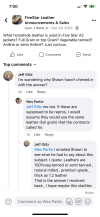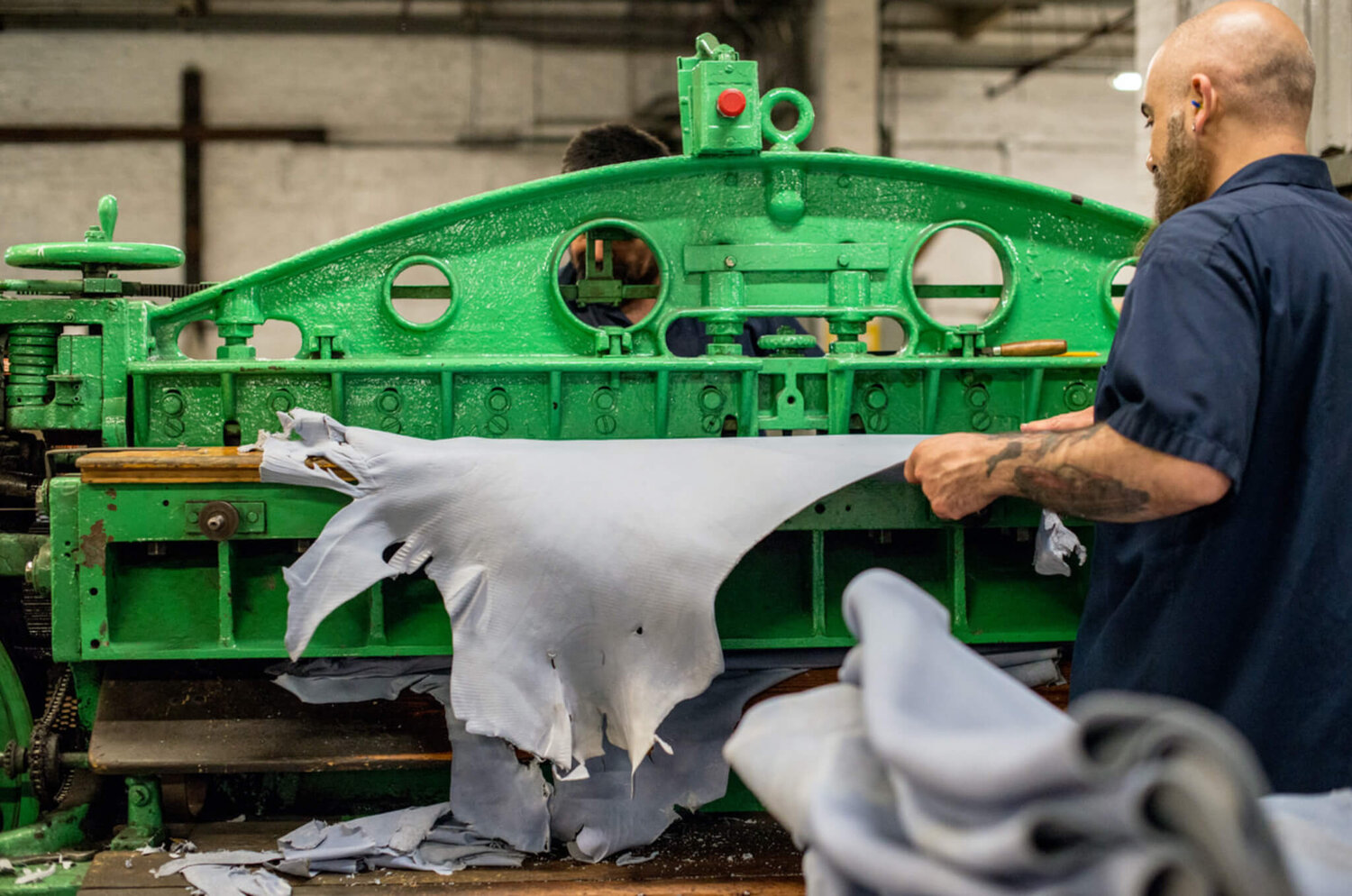TrainDriver
Member
The question was raised on one of FiveStar’s Facebook pages as to whether they use full grain or top grain horsehide. It led to a post that stated someone had emailed 5* and gotten the response in the attached screenshot. It all seemed a bit of marketing gobbledygook without really saying full or top grain.
I had stated that if these are supposed to be accurate repros as they advertise, then they should use whatever the original contracts called for, assuming full grain. I then went to the ACME Depot “history” page and reviewed some of the original requirements and none stated that the jackets are supposed to be full grain.
All that just to ask if FiveStar’s jackets (or anyone else’s for that matter) are full or top grain? If it wasn’t specified in the original contracts, does it really matter? I’m sure the higher end makers use full, but if someone else doesn’t, does it and should it matter to you?
I had stated that if these are supposed to be accurate repros as they advertise, then they should use whatever the original contracts called for, assuming full grain. I then went to the ACME Depot “history” page and reviewed some of the original requirements and none stated that the jackets are supposed to be full grain.
All that just to ask if FiveStar’s jackets (or anyone else’s for that matter) are full or top grain? If it wasn’t specified in the original contracts, does it really matter? I’m sure the higher end makers use full, but if someone else doesn’t, does it and should it matter to you?


